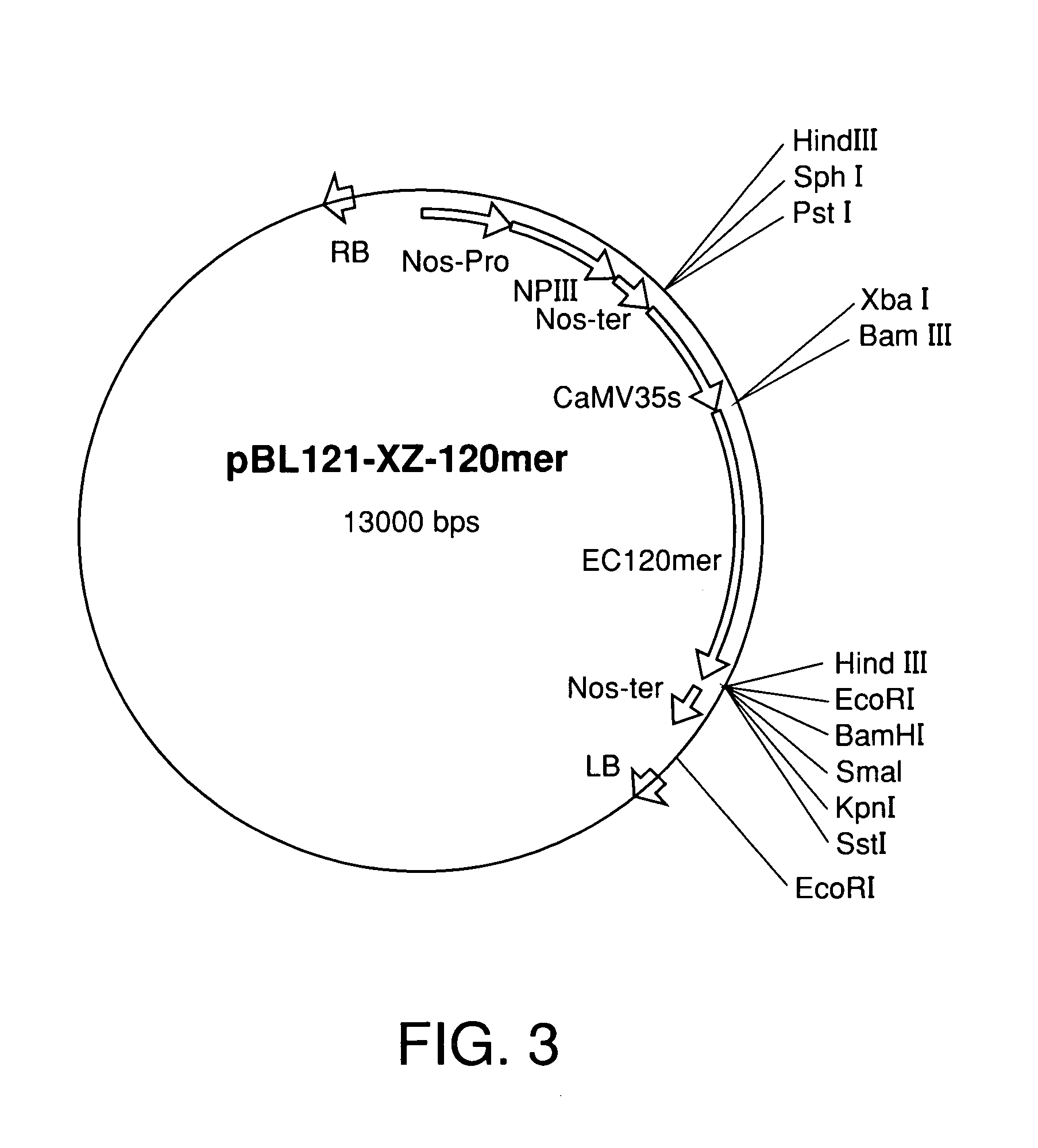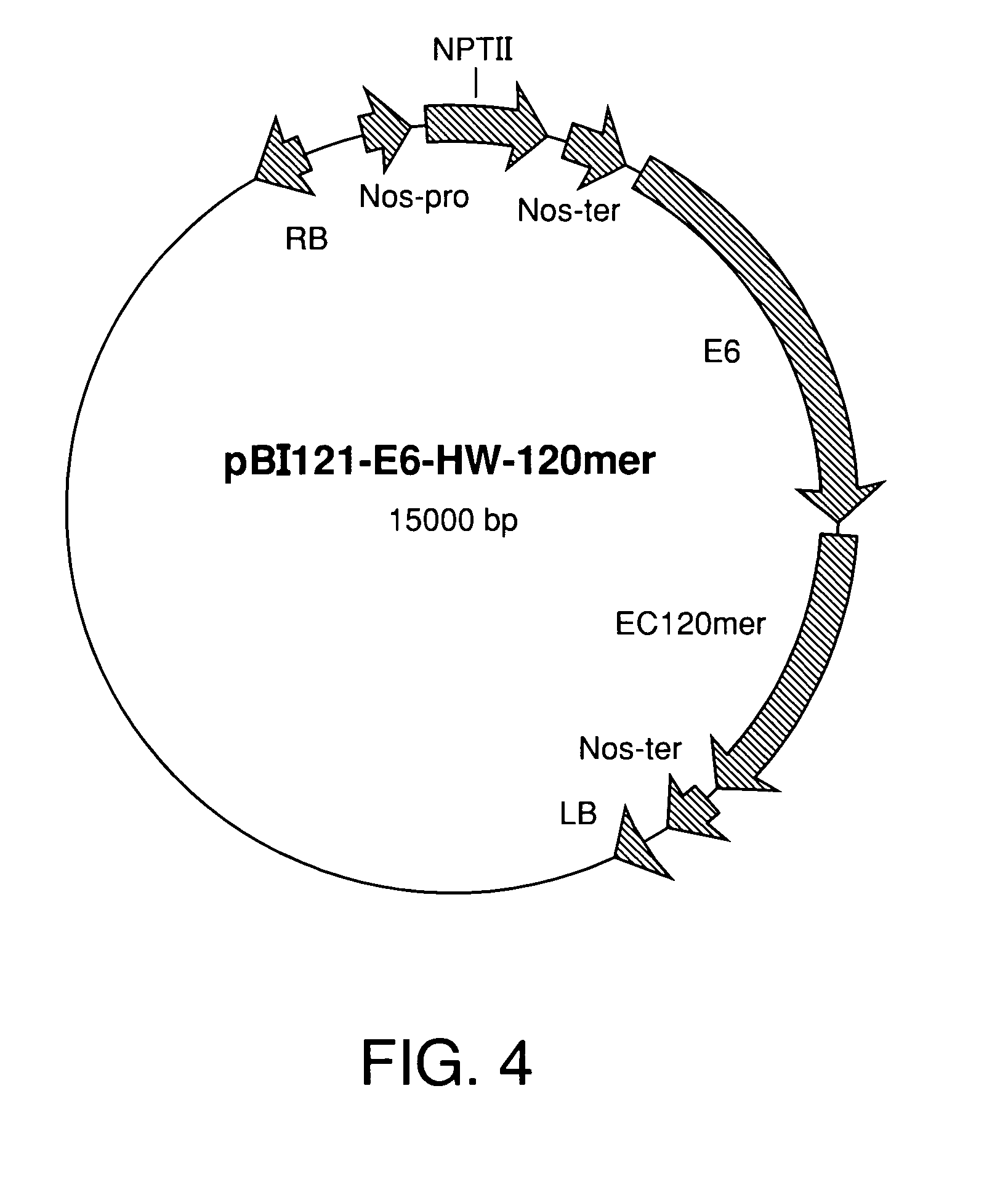Genetic engineering of cotton to increase fiber strength, water absorption and dye binding
a technology of genetic engineering and cotton, applied in the field of genetic engineering of cotton, can solve the problems of species incompatibility and available traits, and achieve the effects of increasing fiber strength, thermal characteristics, and dye binding, and extraordinary mechanical properties
- Summary
- Abstract
- Description
- Claims
- Application Information
AI Technical Summary
Benefits of technology
Problems solved by technology
Method used
Image
Examples
Embodiment Construction
[0014]PBPs are available in nature as materials with extraordinary mechanical properties, such as spider webs composed of silk threads tougher than steel, elastin fibers in the mammalian cardiovasculature which can last almost a century without loss of function and the adhesive produced by a mussel's foot which consistently adheres under extreme conditions in salt water. Elastin, a rubber like elastic fiber found in human arteries (especially in the aortic arch) typically survives for more than 70 years, undergoing repeated cycles of stretching and relaxation. The pentamer peptide sequence Val-Pro-Gly-Val-Gly (VPGVG) is typical of all sequenced mammalian elastin proteins, and in bovine elastin, this sequence is repeated eleven times without a single substitution. It has been shown that this elastic and plastic PBP exhibits elastic moduli that can range from 106-109 dynes / cm2.
[0015]The remarkable elastic properties of PBPs containing multiple repeats of the pentamer sequence (Val1-Pr...
PUM
| Property | Measurement | Unit |
|---|---|---|
| elastic moduli | aaaaa | aaaaa |
| pH | aaaaa | aaaaa |
| volume | aaaaa | aaaaa |
Abstract
Description
Claims
Application Information
 Login to View More
Login to View More - R&D
- Intellectual Property
- Life Sciences
- Materials
- Tech Scout
- Unparalleled Data Quality
- Higher Quality Content
- 60% Fewer Hallucinations
Browse by: Latest US Patents, China's latest patents, Technical Efficacy Thesaurus, Application Domain, Technology Topic, Popular Technical Reports.
© 2025 PatSnap. All rights reserved.Legal|Privacy policy|Modern Slavery Act Transparency Statement|Sitemap|About US| Contact US: help@patsnap.com



